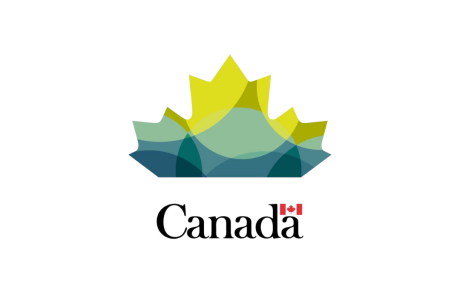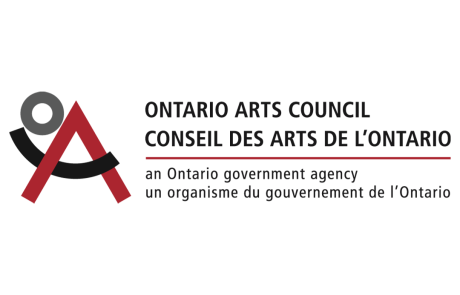after aabaakwad
By Melissa Johns
From December 5-7, I had the privilege of attending aabaakwad (it clears after a storm), an annual event led by Indigenous artists, curators, and academics. Positioning itself as a conversation rather than a conference, this gathering typically alternates between my home city of Tkaronto and other international venues, with a focus on Indigenous arts in global contexts. It is a shapeshifter, the brainchild of Founding Director Wanda Nanibush.
One of the most striking aspects of the conference was the way space was created for Palestinian voices—not simply as attendees, but as active participants directing the flow of discourse through dialogue and presentation. This intentional choice for inclusion and cross-cultural conversation comes in the wake of Nanibush’s removal from her position at the AGO and the Let Wanda Speak movement. The re-centering at aabaakwad served to underscore the depth and richness of Palestinian perspectives, and a powerful reminder that while our contexts may differ, the underlying issues—colonialism, displacement, and the fight for sovereignty—are universal.
The opening keynote was shared between Nanibush and historian Esmat Elhalaby, which functioned as a grounding and call to move beyond the boundaries of single-issue advocacy, focusing instead on combating the broader patterns of oppression that affect us all. Beyond its shared stage, the format of aabaakwad was refreshingly different than one might expect, allowing for deeper engagement and connection with both the people and the material presented.
Each session of Day One saw an abstention from the traditional Q&A section, effectively forcing the audience into a space of deep listening through topics related to art-as-action, language interventions, visual sovereignty, and Indigenous futurisms. Conversely, Day Two began with a screening of previously unseen films from Darlene Naponse, Theo Jean Cuthand, and Jamie Whitecrow, with a great deal of room for interaction built in. The typically imposing structure of a theater hall became a site of raucous laughter and biting truths, where moderation only existed to keep the intimate conversations flowing. Each day’s sessions were capped with creative expressions; during Day Two’s poetry night, we were treated to a surprise appearance from none other than Jeremy Dutcher, who opened the event and went on to provide experimental piano accompaniment to Wael Saad Aldin’s works performed in Arabic.
As is so often the case with Indigenous events, the true magic was in the gathering. There was an undeniable sense of connection, a collective energy which spoke to our shared experiences and honoured our respective homelands. As his introduction during a panel discussion, Charles Campbell introduced himself by placing a small bottle of white rum on the floor for his ancestors. Laakuluk followed her poetry reading with an impromptu telling of the Inuk origins of the sun and the moon. Carl-Johan Utsi discussed how his dreams of becoming the “first Sámi astronaut” were unimportant compared to his calling as a reindeer herder. I saw myself and aspects of my own Kanienke’ha:ka ways of being reflected back at me by artists from far-flung corners of the world, at home in this pan-Indigenous setting.
aabaakwad’s closing keynote by Jolene Rickard on Day Three provided a fitting conclusion to the event, but the evening didn’t end there. We were treated to a diverse performance and music showcase from faces we’d seen throughout the conference, culminating with none other than The Halluci Nation. These performances left us feeling reflective and energized in equal measure, the perfect ending to a conference that had focused so much on art as a force for change.
I left with a renewed sense of purpose, and as I write this, I am feeling the dual rush of inspiration and fatigue that follows such these types of soul-filling events. I look forward to future iterations of aabaakwad, and can say with confidence that I am a newly minted member of the Wanda Nanibush fan club.
 This publication was written by the Indigenous Curatorial Collective / Collectif des commissaires autochtones (ICCA) Administrator, Melissa Johns.
This publication was written by the Indigenous Curatorial Collective / Collectif des commissaires autochtones (ICCA) Administrator, Melissa Johns.
Melissa Johns is a multimedia visual artist and educator from a mixed Kanien’keha:ka (Mohawk, Turtle Clan) and French Canadian background, born and based in Tkaronto. Melissa’s visual practice manifests at the convergence of contemporary media, using interdisciplinary methods to collect, preserve, and transform fragments of the stories around her. Specializing in virtual reality installations, digital painting, and video art, Melissa’s work centers on investigating the narrative potential of these emergent channels.
Melissa completed her undergraduate degree in Fine Arts & Business at the University of Waterloo, as well as an Advanced Diploma in 3D Animation from Humber College. Her graduate research at OCAD University centered on embedding cultural narratives and family histories in a virtual environment. Here I Stand, Still Guarded is an installation which facilitates emotional recollection through constructions of the spaces that shape us.
Having led imagineNATIVE’s Digital + Interactive programming for three festivals, worked at the National Film Board of Canada as a production manager for the VR project Sunalimat she is also continuing to develop new work which engages the past in dialogue for the dual purposes of critical intervention and cultural bridging.









